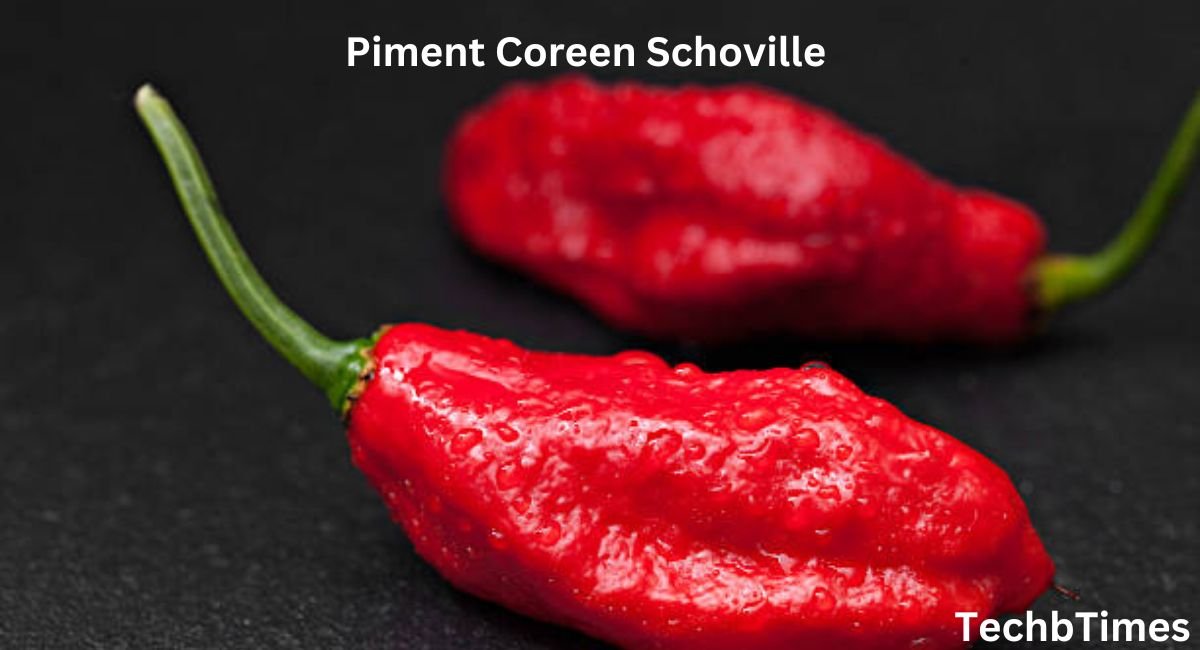Korean cuisine is celebrated worldwide for its bold flavors, vibrant colors, and distinctive heat. At the heart of many Korean dishes lies the piment coréen (Korean chili pepper), a versatile ingredient that delivers a perfect balance of spiciness and flavor. But how hot is it really? Let’s explore the Scoville scale of piment coréen and its significance in culinary traditions.
What is Piment Coréen?
The term piment coréen refers to chili peppers commonly used in Korean cooking. These peppers are typically dried, ground, or fermented to create various forms, such as:
- Gochugaru: Coarse chili flakes.
- Gochujang: Fermented chili paste.
These products are integral to dishes like kimchi, tteokbokki, and bulgogi, adding not just heat but a smoky, slightly sweet flavor.
Understanding the Scoville Scale
The Scoville scale measures the spiciness of chili peppers by determining the concentration of capsaicinoids, the compounds responsible for heat. Scoville Heat Units (SHU) are used to quantify this intensity.
- Mild chilies: 0–1,000 SHU (e.g., bell peppers).
- Medium heat: 1,000–50,000 SHU (e.g., jalapeños).
- High heat: 50,000+ SHU (e.g., habaneros).
Piment Coreen on the Scoville Scale
Korean chili peppers typically fall between 4,000 and 10,000 SHU, similar to cayenne peppers. This moderate heat level makes them versatile, providing a noticeable kick without overwhelming the palate.
Why is the Heat Level Important?
The moderate heat allows piment coréen to:
- Enhance flavor without overpowering dishes.
- Cater to a wide range of spice tolerance levels.
- Blend well with other ingredients in Korean cuisine.
How is Piment Coréen Used in Korean Cuisine?
1. Gochugaru (Chili Flakes)
- Scoville Rating: 4,000–8,000 SHU
- Uses: Essential in kimchi, soups, and marinades.
- Flavor Profile: Smoky, sweet, and mildly spicy.
2. Gochujang (Chili Paste)
- Scoville Rating: 5,000–10,000 SHU
- Uses: Adds depth to bibimbap, stews, and stir-fries.
- Flavor Profile: Fermented, sweet, and spicy.
3. Fresh Korean Chili Peppers
- Scoville Rating: 4,000–10,000 SHU
- Uses: Garnishes, pickling, and fresh salads.
- Flavor Profile: Bright, crisp, and spicy.
Factors Affecting the Heat of Piment Coréen
Several factors can influence the heat level of piment coréen:
- Growing Conditions: Climate, soil, and sunlight can impact capsaicinoid levels.
- Processing: Drying and fermenting can concentrate or mellow the heat.
- Variety: Different types of Korean chili peppers may have varying SHU levels.
Health Benefits of Piment Coréen
In addition to its culinary uses, piment coréen offers numerous health benefits:
- Rich in Antioxidants: Capsaicin and carotenoids combat free radicals.
- Boosts Metabolism: The heat-generating effect can aid in calorie burning.
- Supports Digestion: Stimulates digestive enzymes and improves gut health.
- Anti-Inflammatory Properties: Capsaicin reduces inflammation and relieves pain.
How to Incorporate Piment Coréen into Your Diet
If you’re new to Korean chili peppers, start small and gradually increase the quantity:
- Add a teaspoon of gochugaru to soups or stews for a subtle kick.
- Mix gochujang with sesame oil and honey to create a versatile dipping sauce.
- Use fresh piment coréen as a garnish for salads or grilled dishes.
FAQs
What makes piment coréen unique compared to other chili peppers?
Piment coréen offers a balance of heat and sweetness, making it versatile for a wide range of dishes. Its smoky and fermented variations add depth to Korean cuisine.
How spicy is piment coréen on the Scoville scale?
It typically ranges between 4,000 and 10,000 SHU, providing moderate heat similar to cayenne peppers.
Can I substitute piment coréen with other chili peppers?
Yes, cayenne or red chili flakes can be used, but they may lack the smoky and sweet nuances of piment coréen.
Is piment coréen healthy?
Yes, it’s rich in antioxidants, supports metabolism, and offers anti-inflammatory benefits.
Where can I buy piment coréen?
You can find it in Asian grocery stores or online marketplaces specializing in Korean ingredients.
How do I store piment coréen?
Keep it in an airtight container in a cool, dry place to preserve its flavor and heat.
The Ultimate Guide to 860007799525 Nurcher Cranium Foods for Brain Health
Conclusion
The piment coréen is more than just a source of heat—it’s a cornerstone of Korean cuisine that enhances dishes with its unique flavor profile. Whether you’re a spice enthusiast or a culinary explorer, understanding its Scoville scale and versatile uses can elevate your cooking. Start experimenting with piment coréen today and bring the vibrant flavors of Korea to your table.










